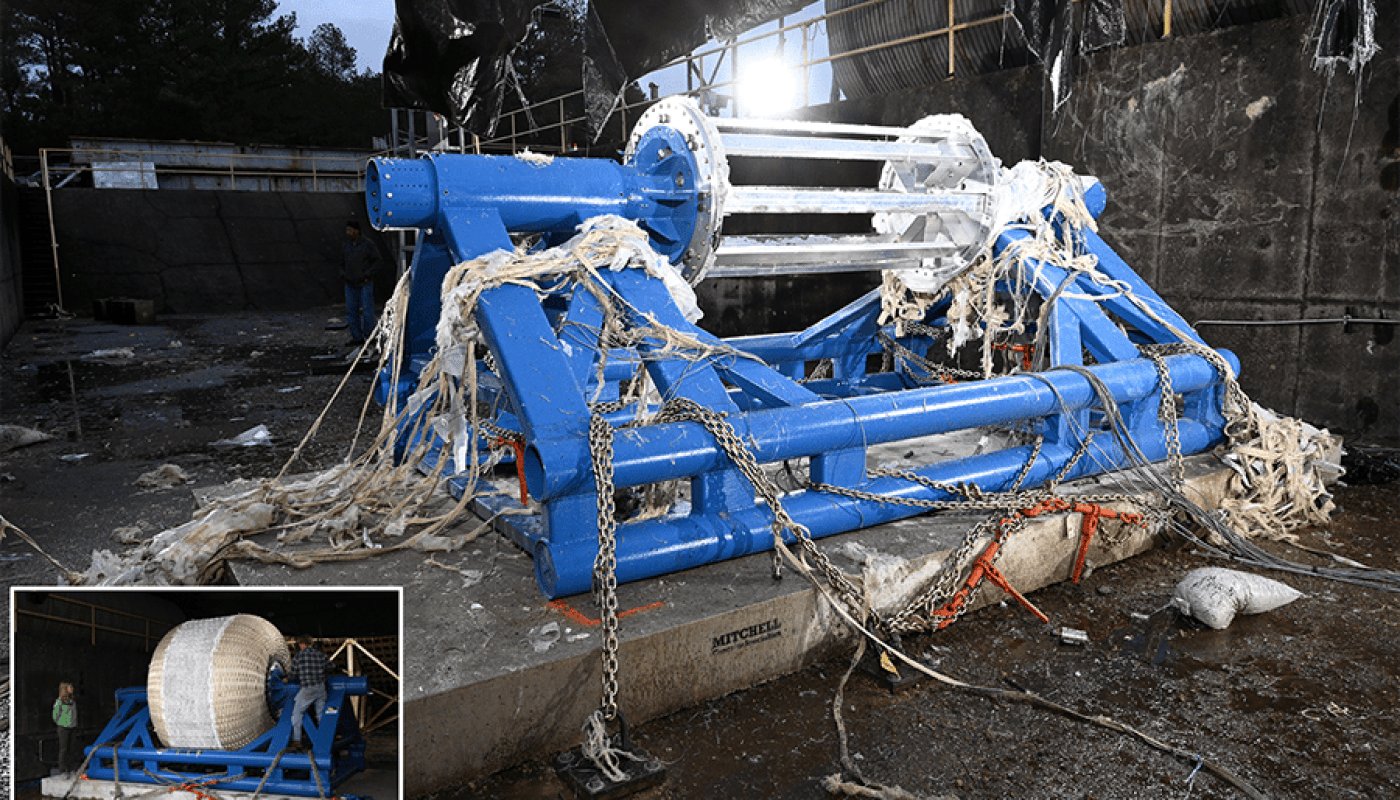Normally, it would be a very bad day if your space station habitat module blew up. But it was all smiles and high-fives in mission control when Sierra Space’s LIFE habitat was intentionally over-inflated until it popped spectacularly in an Ultimate Burst Pressure (UBP) test. This video shows the moment of boom from several different viewpoints.
The test was performed on November 15, and due to the test’s potentially explosive nature, the team placed a subscale test version of the inflatable module in the flame trench of the Saturn 1/1B test stand at Marshall Space Flight Center in Alabama, where NASA tested rockets for the Apollo program.
This is the second burst test this year for the LIFE (Large Integrated Flexible Environment) habitat. The test article was filled with gaseous nitrogen to test how strong the inflatable high-strength “softgoods” materials are. The goal was to climb past 182.4 PSI (pounds per square inch) which is NASA’s thresholds for certification for pressurized modules.
Sierra Space is a a subsidiary of Sierra Nevada Corporation. The previous Sierra Space test in July 2022 exceeded that mark, bursting at 192 PSI. This most current test included several ‘holds’ at various points to test the longevity of the materials under pressure. When pressure reached 204 PSI, it blew. But that pressure level gave the team a lot to celebrate.

“The LIFE habitat module is essential technology for enabling humans to safely and comfortably begin to develop new civilizations in space,” said Sierra Space CEO Tom Vice, in a press release. “This project will service many different opportunities for the new space economy, and the results of this most recent test and milestone are testament to the progress our team is making to enable the next chapter in space commercialization. We look forward to continuing to build this key element in our technology portfolio and paving the way for the development of advanced inflatable habitat systems and architectures.”
The full-size version inflates to a three-story commercial habitation and science platform that is 8.2 meters (27 feet) in diameter and 8.2 meters long, with 300 cubic meters of space, or about 1/3 of the pressurized volume on the International Space Station. LIFE is designed for low-Earth orbit (LEO) and will allow humans to live and work comfortably in space. It can house a crew of 4-12.
The module’s ‘softgoods’ are made of sewn and woven fabrics – primarily Vectran – that become rigid structures when pressurized. Sierra Space said the weave they use is stronger than steel and tough enough to withstand the required internal pressure. The softgoods outer layers are composed of a series of materials designed for orbital debris and thermal protection
A full scale model will be burst pressure tested sometime in 2023.
While Sierra Space hopes NASA and Japan’s space agency JAXA will consider using their habitats in coming years, LIFE will serve as both a habitation and a payload element for the Orbital Reef commercial space station, a collaboration between Sierra Space and Blue Origin.


What I want to know is how it will hold up to the radiation and space debris it will encounter. I notice that they never fully trusted the inflatable module that was connected to the ISS.